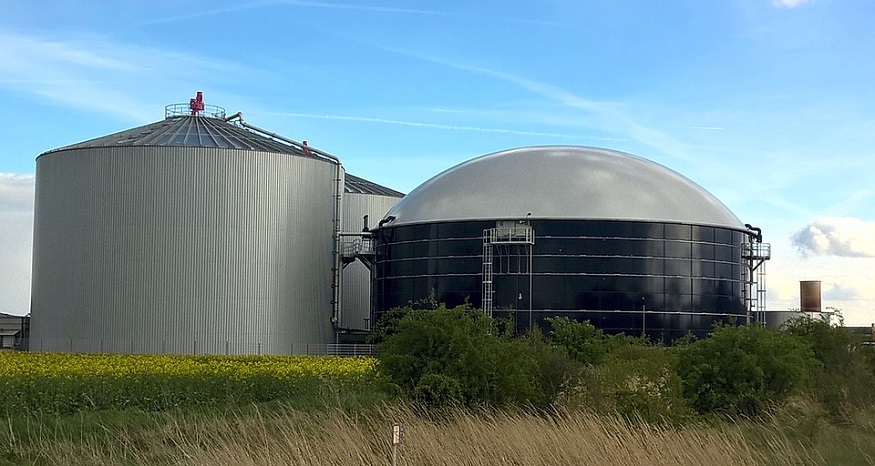
Biogas Production: Is It An Effective Solution To Cope With The Impending Energy Crisis?
March 22, 2021It’s 2021 and unless you’re living under a rock, you’re aware of the catastrophic issues plaguing the planet.
Global warming, climate change, pollution, fossil fuel depletion – this is just a glimpse of the various man-made problems that are threatening our society.
This, in turn, has compelled businesses and consumers alike to look for more sustainable energy sources. While wind and solar power have grabbed the limelight, biogas has also been gaining popularity as a clean and green source of energy.
Biogas Production: A Closer Look
If you’re familiar with the fundamentals of renewable energy, chances are you already have a fair understanding of biogas. Simply put, it’s a type of biofuel that’s produced from organic matter, such as wastewater sludge, food waste, manure, and vegetable scraps.
Biogas is generated when microorganisms, such as bacteria, react with organic matter and break it down. The process is called anaerobic decomposition. Primarily, biogas comprises methane, along with traces of hydrogen sulfide, carbon dioxide, and water.
So, what makes biogas an excellent alternative to fossil fuels, such as coal, diesel, and petrol? How are you supposed to use biogas? Does it come with any limitations? Let’s find out.
Why Biogas Deserves Your Attention?
To begin with, biogas tackles two major environmental concerns – waste disposal and energy conservation. Traditionally, organic waste used to be dumped into landfills where it would undergo fermentation beneath the earth’s surface. This, in turn, generates a huge amount of methane, a potent greenhouse gas.
A biogas production plant resolves this proper by decomposing the waste and utilizing the resulting methane gas for household and commercial applications. Also, it can be an effective way to handle the problem of industrial waste disposal.
If factories start segregating their industrial waste, the biodegradable matter can be transported to biogas plants instead of dumping it into the sea. This, in turn, helps preserve the natural habitat of the flora and fauna in the region.
Biogas can even be used to power vehicles and electricity grids. This will go a long way to reduce the demand for conventional fuels, such as gasoline and diesel. While combustion of biogas produces carbon dioxide (a greenhouse gas), the carbon is derived from plant matter. That’s why it isn’t as detrimental to climate change and global warming.
It’s also worth mentioning here that installing and maintaining biogas plants is straightforward and affordable. It can be instrumental in providing electricity and cooking gas to rural and impoverished areas. That’s why biogas has been increasingly adopted in developing and underdeveloped countries.
Moreover, the byproduct of biogas production, known as organic digestate, is an excellent organic fertilizer. It can be used to replace toxic man-made fertilizers in agricultural farms. This, in turn, makes biogas a source of renewable energy.
Diverse application, ranging from cooking gas to grid electricity, combined with a low carbon footprint make biogas one of the best alternative fuel options. But it comes with a few major challenges that are hindering its large-scale production.
Limitations of Biogas
One of the most crucial factors that hinders the widespread biogas production is that it’s location dependent. Anaerobic digestion of organic matter happens at a specific temperature and pH level.
If your plant is situated in a cold region, you’ll need to install special heating systems to create the right ambient conditions for decomposition. This, in turn, means you’ll need to source electricity from the grid. It’ll increase the overall carbon footprint of your plant and defy the purpose of generating biogas in the first place.
A potential way of resolving this problem is to use wind, solar, or hydroelectric energy to power the heating system. But this will also depend on the availability of such natural energy sources in your area.
Moreover, biogas often comes mixed with various impurities, including water and bacteria. Prolonged use to run vehicles can corrode the engine and pipes. The composition of biogas can also vary because you have no control over how the microorganisms decompose the waste.
However, if you want to use biogas in thermal and power plants, it’s essential to have a clear idea of its methane content. If plant operators don’t know the precise composition of the available biogas, they can’t maximize fuel efficiency.
Conventional flow measurement devices, including orifice plates and vortex flow meters, aren’t suitable for assessing biogas composition. An effective way of dealing with this problem is to install ultrasonic flow meters in thermal and electric power plants. It’s easy to install and offers accurate measurement of the methane content in biogas.
Ultrasonic flow meters are easy to install as well; you just have to clamp them onto the pipes carrying biogas. Despite the high upfront cost, they prove to be more durable in the long run.
It’s also worth noting here that organic waste may not be readily available everywhere, particularly in urban areas. Most city dwellers are going to have limited access to organic matter. This is one of the major factors that has hindered the large-scale adoption of biogas in cities.
While you can always transport various types of biodegradable waste to cities, it’s going to amplify the carbon footprint. You could resolve this problem by using renewable and eco-friendly fuels for the vehicles.
Have you used any type of green fuel? Share your experience in the comments section below.



 With over 15 years of reporting hydrogen news, we are your premier source for the latest updates and insights in hydrogen and renewable energy.
With over 15 years of reporting hydrogen news, we are your premier source for the latest updates and insights in hydrogen and renewable energy.